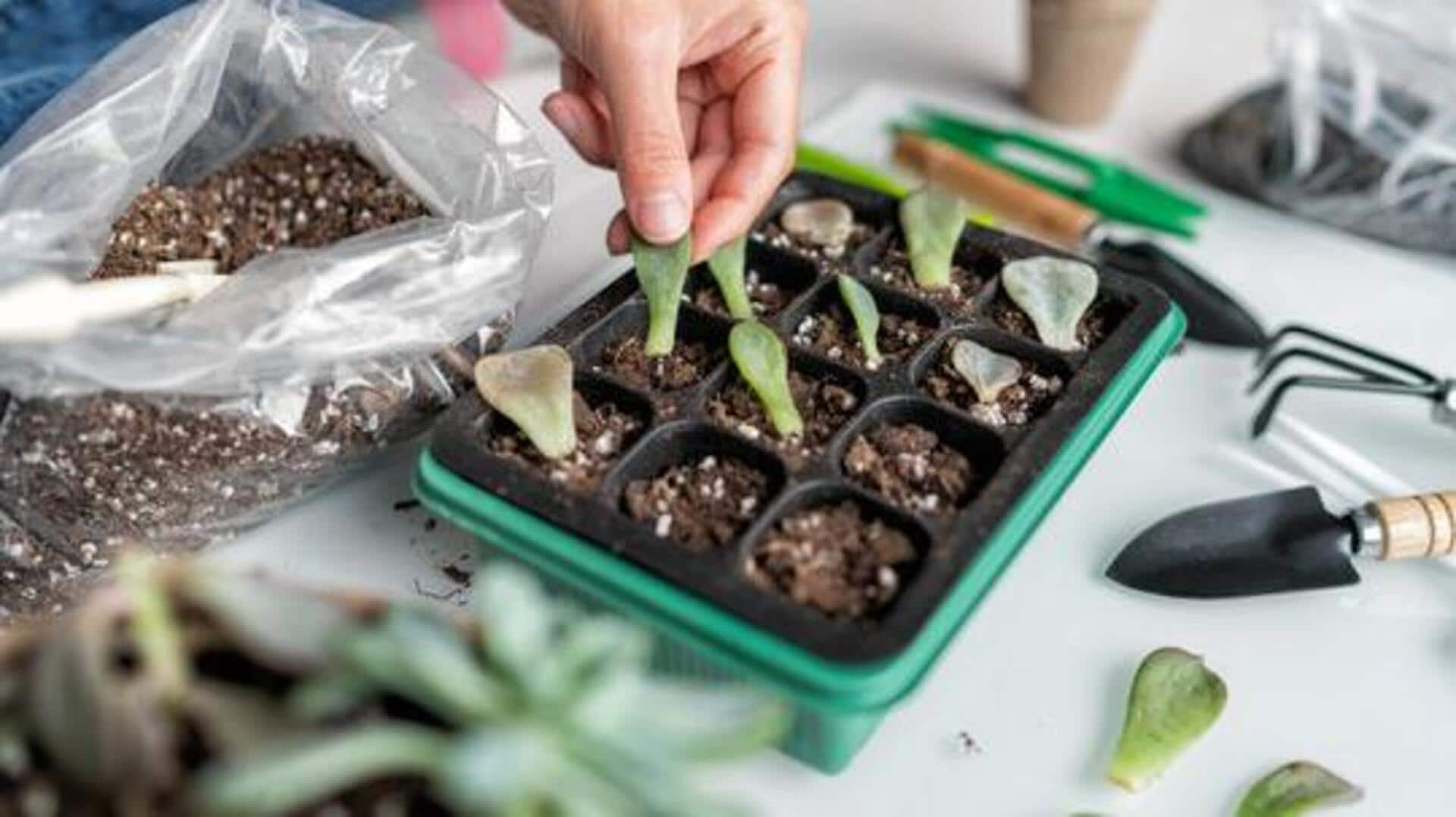
How to propagate indoor plants
What's the story
Indoor plant propagation is an interesting process where you can multiply your favorite plants without the need to buy new ones.
It saves money and gives you a sense of accomplishment as you see your plants grow from cuttings/seeds.
Knowing the basics of propagation can make your indoor gardening experience more rewarding and sustainable.
Here are some effective techniques to propagate indoor plants.
Selection
Choosing the right plants
Selecting the right plants for propagation is crucial.
Some species, like pothos and spider plants, are easier to propagate than others due to their natural growth habits.
Research which plants are best suited for beginners and which require more advanced care.
Starting with easy-to-propagate varieties can increase your success rate and build confidence in your gardening skills.
Techniques
Understanding propagation methods
There are several other methods of plant propagation, such as stem cuttings, leaf cuttings, division, seed sowing, etc.
Each technique comes with its own set of requirements and works best with certain kinds of plants.
For example, stem cuttings are perfect for vining plants, division for clumping species like ferns, etc.
Familiarizing yourself with these methods will help you choose the best one for each plant type.
Environment
Providing optimal conditions
Creating the right environment is critical for successful propagation.
Light, temperature, humidity, soil quality, etc., are important factors in plant growth.
Most cuttings need bright, indirect light, and consistent moisture levels to root effectively.
Making sure that these conditions are met will increase the chances of successful rooting and healthy growth.
Observation
Monitoring growth progress
Once you've propagated your plants, it's important to monitor their progress regularly to ensure they grow well.
Look for signs like new leaf growth or root development to see if your efforts are paying off.
If you notice problems like wilting or discoloration, you may need to tweak environmental factors or check for pests.
Solutions
Troubleshooting common issues
Propagation can sometimes be tricky (like with rot or failing to root at all).
To avoid this, make sure to sterilize the tools you're cutting with so that there's no chance of infection, and avoid overwatering (which can cause rot issues for tender young roots or stems trying hard enough already just getting started on their journey towards becoming full-fledged houseplants themselves someday soon).